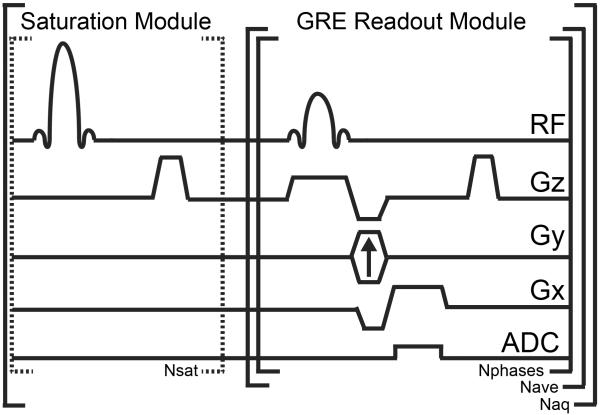Figure 1.
Pulse sequence diagram for cardioCEST. CEST contrast is generated via a train (Nsat) of spatially non-selective saturation pulses tuned to a specific offset frequency. The gradient echo readout module is used to acquire cine images with N cardiac phases (Nphases) following each electrocardiogram trigger. After N phases, the readout module is repeated at a constant repetition time but data is not acquired until the subsequent electrocardiogram trigger (dummy pulses). Following execution of the saturation module, the GRE readout module is executed Nave times for one line of k-space and the results subsequently averaged prior to image reconstruction. The saturation and readout modules are repeated Naq times to acquire all phase-encode steps. Both the offset frequency and the power of the saturation module can be adjusted to image specific molecular targets.

